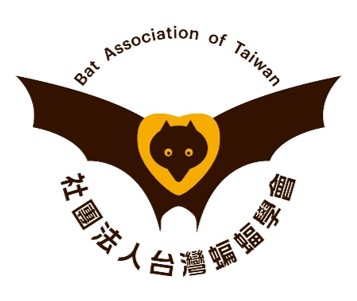蝙蝠研究
2010_台灣狐蝠生態研究之初探_吳慧雯
出版年份:2010
研究生:吳慧雯
分類:碩士論文
題目:台灣狐蝠生態研究之初探
Title:Preliminary Ecological Study on the Formosan Flying Foxes (Pteropus dasymallus formosus)
摘要:
本研究透過文獻回顧整理、出沒地居民訪談,以及野外目擊觀察、食渣收集和無線電追蹤等研究方式,對台灣狐蝠 (Pteropus dasymallus formosus) 的生態進行初步了解,俾利未來進一步研究及保育該物種的參考依據。台灣狐蝠於1873年由Sclater發表為一個新種,1933年黑田將其改列為琉球狐蝠 (Pteropus dasymallus) 五個亞種之一。台灣狐蝠早期穩定棲息於綠島,相關研究不多,僅日治時期 (1895- 1949) 有較多的觀察紀錄。1976-1986年間,台灣狐蝠因遭受嚴重的獵捕威脅及棲地破壞,族群數不斷下降,1989年,正式由政府列為瀕臨絕種保育類野生動物。2006年起,台灣東部各地陸續發現零星漂流的狐蝠個體,綠島亦重新觀察到野外的個體,更於龜山島發現常駐的族群。根據文獻整理及訪談結果,綠島為台灣狐蝠早期最主要的棲地,台灣東部各地皆屬於零星出現,而目前則僅綠島及龜山島有固定的族群分布。本研究以龜山島為田野觀察點,發現台灣狐蝠食性以榕屬植物如稜果榕的果實為主,但是在食物資源不穩定時,亦會取食其他食物資源;主要活動覓食時間為日出前及日落後,雖然不會形成顯著的大群體,但個體間偶有互動,交配時間約為秋季,產仔則於春季四月左右。日間棲所選擇方面,狐蝠偏好棲息於近水源處的陡峭天然林內,研究期間四個月內,單一個體的日間棲所涵蓋範圍不超過1km2。為確保台灣狐蝠的族群可以穩定棲息在龜山島及綠島,狐蝠保育應首重其偏好棲息的天然林谷地,建議將龜山島設立為「野生動物重要棲息環境」,並對龜山島及綠島的現有族群進行長期監測調查。
Abstract:
This study uses literature review, interviews of local residents, field observation, radio tracking and rejecta collection to form a preliminary ecological understanding of the Formosan flying fox (Pteropus dasymallus formosus) that can provide a foundation for further research and reference for conservation planning. The Formosan flying fox was first described as a new species in 1873 by the British scholar Sclater, and was re-classified to one of five subspecies of the Ryukyu flying fox (Pteropus dasymallus) by Nagamichi Kuroda in 1933. At the past, Formosan flying foxes established a stable population on Green Island, although early historical research information is limited to mainly the Japanese colonial period (1895-1949). From 1976-1986, overhunting and habitat destruction severely threatened the Formosan flying fox population, and in 1989 it was officially listed as a protected endangered species by the Wildlife Conservation Law. Since 2006, scattered individuals of flying foxes have been reported in eastern Taiwan, including re-observation of wild individuals on Green Island and discovery of a permanent population on Turtle Island. The literature review and interviews by this study indicate that the main range of the Formosan flying fox in the past was located on Green Island, with sporadic sightings in eastern Taiwan. Currently, the Formosan flying fox is only distributed on Green Island and Turtle Island. Literature review and field observations reveal that the bat’s diet consists mainly of fruits from the species of Ficus that are found on the island, but during times of food scarcity, it will feed on other types of food resources. It is most active before sunrise and after sunset. The bats do not form into significantly large groups, but there are occasional interactions between individuals. Mating occurs in the fall and offspring are usually borne in the following spring, around April. The bats prefer day roosts that are located in natural forests on steep slopes near water sources. During the four-month radio-telemetry portion of this study, day roost range of monitored bats did not exceed 1 km2. In order to ensure that stable populations of Formosan flying fox are established on Turtle Island and Green Island, this study recommends prioritization for the conservation of the bats’ preferred forested ravine habitat, establishment of Turtle Island as a “major wildlife habitats” and continuation of long-term monitoring of the existing populations on Turtle Island and Green Island.
